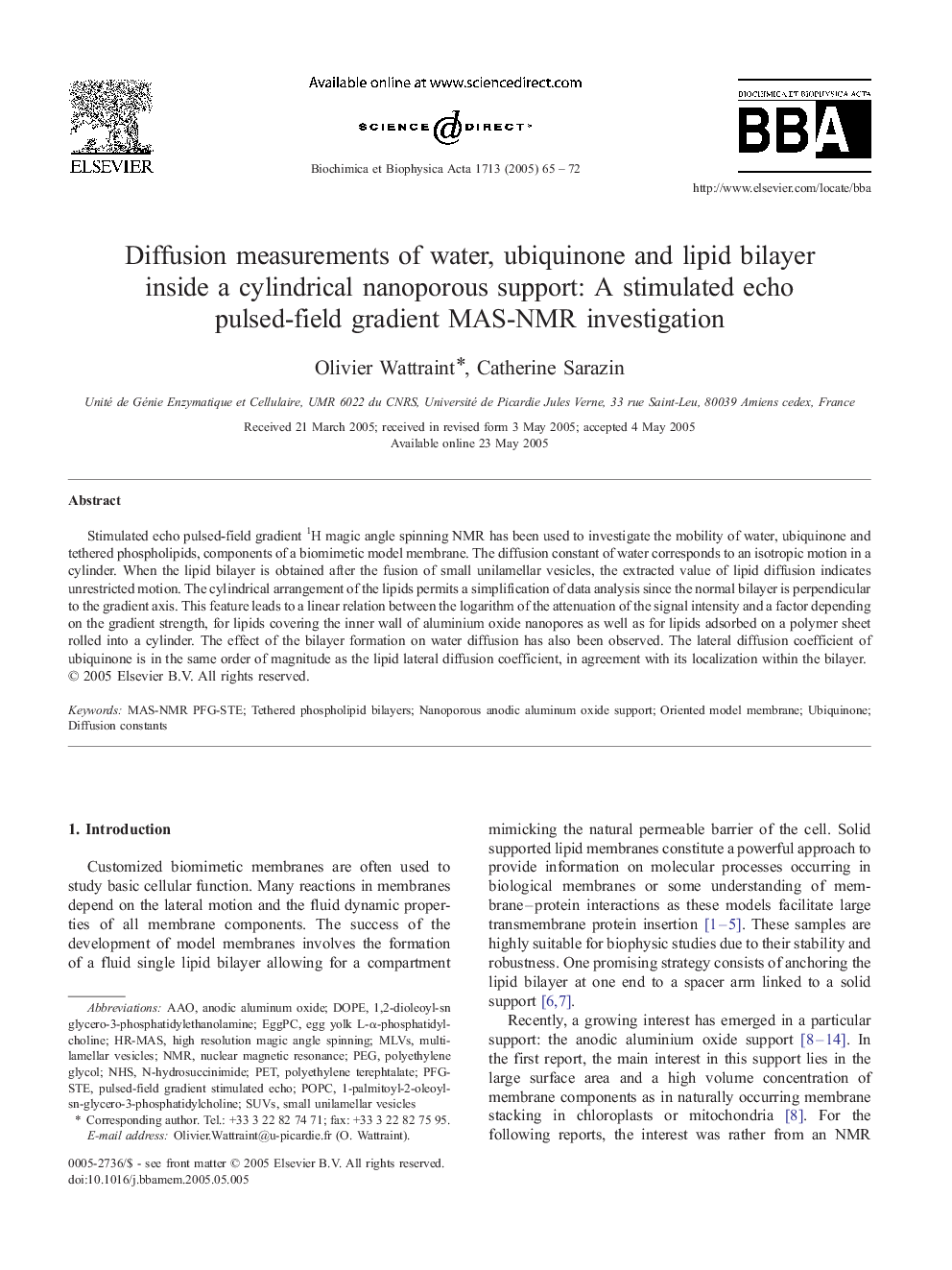| Article ID | Journal | Published Year | Pages | File Type |
|---|---|---|---|---|
| 10798227 | Biochimica et Biophysica Acta (BBA) - Biomembranes | 2005 | 8 Pages |
Abstract
Stimulated echo pulsed-field gradient 1H magic angle spinning NMR has been used to investigate the mobility of water, ubiquinone and tethered phospholipids, components of a biomimetic model membrane. The diffusion constant of water corresponds to an isotropic motion in a cylinder. When the lipid bilayer is obtained after the fusion of small unilamellar vesicles, the extracted value of lipid diffusion indicates unrestricted motion. The cylindrical arrangement of the lipids permits a simplification of data analysis since the normal bilayer is perpendicular to the gradient axis. This feature leads to a linear relation between the logarithm of the attenuation of the signal intensity and a factor depending on the gradient strength, for lipids covering the inner wall of aluminium oxide nanopores as well as for lipids adsorbed on a polymer sheet rolled into a cylinder. The effect of the bilayer formation on water diffusion has also been observed. The lateral diffusion coefficient of ubiquinone is in the same order of magnitude as the lipid lateral diffusion coefficient, in agreement with its localization within the bilayer.
Keywords
MLVsEggPCPoPCubiquinoneHR-MASAAONHSnuclear magnetic resonance1-palmitoyl-2-oleoyl-sn-glycero-3-phosphatidylcholineSUVsmultilamellar vesiclesAnodic aluminum oxideNMRhigh resolution magic angle spinningegg yolk l-α-phosphatidylcholinePETPolyethylene terephtalatepolyethylene glycolPEGDOPEsmall unilamellar vesicles
Related Topics
Life Sciences
Biochemistry, Genetics and Molecular Biology
Biochemistry
Authors
Olivier Wattraint, Catherine Sarazin,
